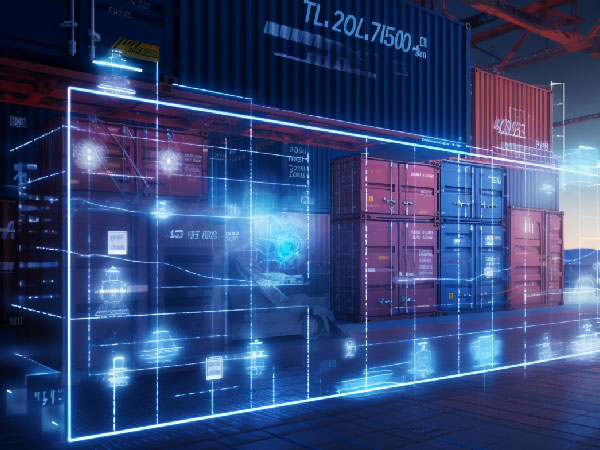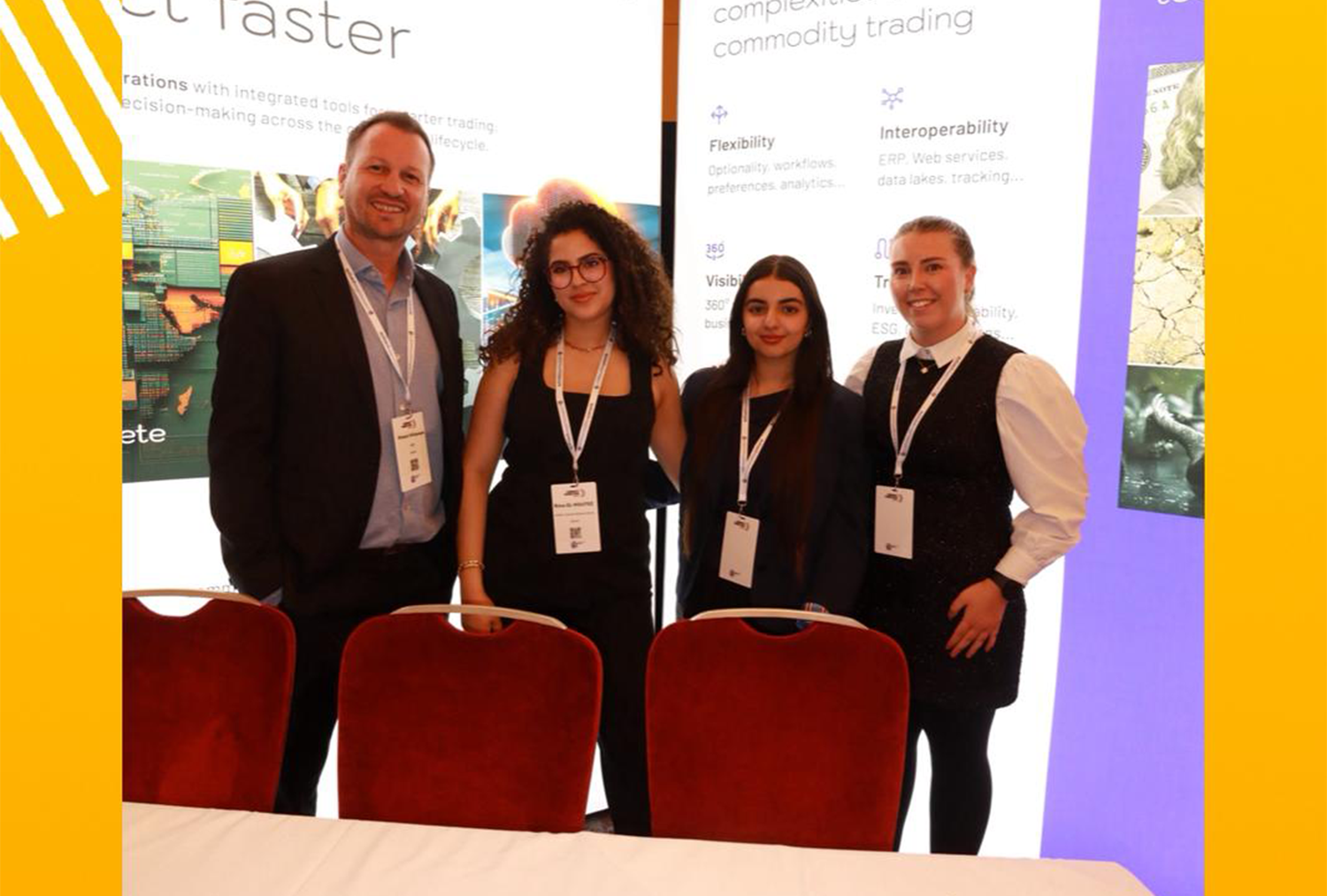Commodity traceability is a large and complex subject, and one that is changing rapidly. It is often discussed in terms of verifying ESG initiatives, but it has a far wider scope than this. Traceability is essential for effective supply chain management, business continuity, and even capturing the full value of shipments in contract pricing. There are many different aspects of traceability to consider, so we have put together an overview, packed full of links to more detailed information.
What’s driving commodity traceability?
Legislation
One of the most important drivers of commodity traceability is the legislative landscape. Legal and compliance risks pose a serious threat to every business. And commodity traders do not only need to comply with industry-specific legislation, as laws from anti-slavery bills to food safety and even the US Dodd-Frank banking regulations mean that both traders and their clients need better visibility of their supply chains than ever before.
As well as this general legislation, there are many commodity-specific regulations, and many jurisdictions have their own traceability legislation too. For example, the EU is in the process of introducing both a Carbon Border Adjustment Mechanism and the EU Deforestation Regulation which will apply to products entering the bloc, regardless of where the trading company is based.
Risk
As well as the compliance risk listed above, supply chain traceability can help to mitigate against counterparty risk, from helping to identify your most reliable partners to reducing the risk of fraud, sanctions, and geopolitical risk through integrating risk management into your supply chain operations.
Poor traceability also carries with it an inherent reputational risk. This can arise from being perceived to not be doing enough to ensure an ethical supply chain, or from attempted or accidental greenwashing. Greenwashing occurs when an organisation misleads stakeholders by providing false information about their environmental impact.
As well as the reputational risk, greenwashing can represent a legal risk, with several companies facing class action lawsuits due to their sustainability claims. This legal risk also extends to commodity traders who risk breaching contracts by not adequately documenting their adherence to clients’ responsible sourcing policies.
Poor traceability practices can also increase your organisation’s credit risk as finance providers and counterparties increasingly focus on their own exposure to supply chain risk. But the inverse is also true – demonstrating robust traceability processes can send positive signals to counterparties and even result in preferential trade finance agreements.
Stakeholders
External stakeholders that are improving traceability in their own supply chains need commodity traders to provide transparency as to where and how materials are sourced. As do trade finance providers who are increasingly under obligation to assess the impact of the products they finance. And exchanges are also increasing the responsible sourcing and traceability requirements that brands must adhere to.
End consumers are the stakeholders that drive much of this changing behaviour, by sending signals including paying a premium for certified products such as Fairtrade or organic chocolate and coffee. Consumers are also avoiding brands that do not meet their ethical standards, with 77% of UK consumers avoiding brands for this reason.
It is also important not to overlook the role of internal stakeholders. As well as reducing risk and meeting demand, traceability allows organisations to ensure they are operating a responsible business, an important consideration for many employees. Sustainability initiatives can make a large difference in recruitment and retention, with one survey finding that 6 in 10 job seekers were looking for a better fit between their own and their employer’s corporate values.
Explore the drivers of commodities traceability in more detail.
The benefits of traceability in commodities
The drivers listed above are all push factors encouraging commodity traders and merchants to improve their traceability and transparency, but there are also many pull factors as traceability can have more benefits than you may at first realise.
Data transparency and operational risk
Sharing data between internal teams is a perennial challenge in commodities, but this is essentially what commodity traceability is designed to do. Putting the right systems in place to manage your commodity traceability means that you will improve data-sharing across the organisation too.
For example, Gen10’s CommOS shares real-time information on the actions traders and operators are taking throughout the day. Each team can therefore make the best decisions based on live information that is automatically shared with them. This can reduce operational risk in several ways. Firstly, it means seamless live communication between trade desks and risk teams so that, for example, a trader can see a counterparty’s actual credit line usage and their pre-approval limit without interrupting the risk team.
Sharing data between internal systems also reduces the operational risks that arise from reporting information after the fact and manually copying information across systems. With a range of integrations and APIs, CommOS can connect to ERP and accounting systems, pricing feeds, vessel tracking, inspection companies and more. Advantages of this data-sharing can be felt all across the business, with the examples above, instant reconciliation, and inventory visibility even at sea, to name just a few examples.
Find out more about solving operational risk.
Supply chain efficiency
An efficient supply chain is one with minimal waste in terms of resources, delays, and profit left on the table, as well as one that makes the best use of time for those managing resources. Commodity traceability is essentially supply chain visibility, so good traceability data means you know where all your stock is at all times, all its quality data, and where it was sourced.
This means that traceability can improve your commodity logistics – the life-blood of many trading organisations. Having the data your team needs allows them to reliably meet deadlines, plan the best use of storage and shipping resources, minimise journey times, and ensure that quality metrics maximise the full value of every contract.
Traceability data can also improve your agility if you can update it in real time. The above efficiencies can all be made as the live situation changes, such as operators allocating the most relevant stock to a newly-signed contract or responding to a delayed shipment, and risk managers making faster strategic decisions to protect the company or to identify new opportunities.
Traceability can also mean that your teams operate in a less manual and more collaborative fashion, leading to even greater efficiency. Improving your traceability processes means improving your data management systems so that data is readily available, usable, and does not need to be manually copied or shared.
Supply chain resilience
We have already discussed the supply chain risks that commodity traceability can mitigate, which improves supply chain resilience. But when things do go wrong, having the right data management in place can make all the difference in your response. When disruption occurs, you need accurate and timely information. For example, Gen10’s traceability and Commodity Management Systems can integrate with live vessel tracking software, so you know where your shipments are, even when they’re at sea. This gives you the information needed to be able to re-route them in response to extreme weather events or other disruptions.
A faster response to disruption often means a reduced impact on your business, saving time and costs. This is particularly true if you have the systems in place to reduce manual processing and the human resource cost of disruption. A faster response also improves business continuity as you can get back to normal faster and therefore minimise any knock-on impact on your, and clients’, regular operations.
Commodity traceability is all about the data
So, having looked at why traceability matters and the benefits it can bring to commodity traders, the next question is what do you need to consider when embarking on a traceability project?
The first thing to note is that every commodity is different, with different standards and legislation to abide by, as well as different supply chain concerns, consumer demands and certification schemes. Quality data is another area that is managed alongside traceability so can often be improved with a traceability project, and this again is very commodity-specific.
As well as our advice for all traders and merchants below, you may be interested in our articles on traceability specifically in cotton, cocoa, metals, carbon credits, and biomass.
A data audit
When considering what you want to achieve from a traceability project, it can be useful to start with a data audit so you can understand what information you already have, how it is shared, and where the gaps are, in terms of both the data you collect and how it is processed and used.
Before requesting more data from your suppliers, decide what you want to measure and report on. Prioritise the information that is most important but that is also attainable so that you can focus on getting results and avoid information overload. And consider what it is realistic to expect in the short term, compared to any longer-term projects that may require them to collect more data before they can share it. This can help you achieve quick-win results earlier in the process, which can generate buy-in for larger investments of resources and time.
It is also important to consider which teams will be using this data once it is available, and how you can use, manage and process it. You may well find that data can be put to different uses in different teams, so need to ensure it is available but that you also retain a single source of truth. So part of your data audit should include your CTRM, ERP and Commodity Management Systems, and whether you need to add any functionality to them.
Data verification
Once you know what additional data you will need, the next question is how will you incorporate this data into your system? Data validity is all about ensuring that data can be read and used, and that it is input into the correct field in the correct format so that it can be processed and reported on.
Different ways of incorporating data provide different levels of validation. For example, if your people are copying data from a spreadsheet into CTRM fields, there is no automated verification and mistakes can easily happen. However, with automated file uploads or APIs continually sharing data between systems, your team only need to make sure the fields match and the system will ensure data is correct, with your team providing an additional level of confirmation if required.
Your Commodity Management System is key
Many organisations use multiple systems, including a CTRM, ERP, general ledger, vessel tracking systems and more to manage their operations. This can also be referred to as a commodity management ecosystem – the group of systems that are collectively used to manage your commodity trading.
A Commodity Management System, on the other hand, is a single piece of software that integrates these disparate systems, either by providing more functionality than each system alone, or by adding functionality and integrating the other systems into one joined-up data tool. Whether you are using an ecosystem or a Commodity Management System, this technology underpins your data management and can make or break your traceability initiatives.
As seen above, commodity traceability all depends on how you manage data coming into your organisation, across your processes and on to your end clients. We have already explored how it can help you incorporate more new traceability data into your daily workflows. The right Commodity Management System (or ecosystem) can also make traceability across your own operations automatic.
It allows you to create an automatic audit of all activities carried out, with no additional input from your team. And by carrying out all activities in one joined-up system, you have all the data you need for this audit. It also allows you to demonstrate the exact journey stock has taken across your operations; from the initial purchase, through any blending or other transformations and to the end client. This also means that any certifications are also managed and tracked across your entire operation.
Build for flexibility
As we have seen from the driving factors of commodity traceability, this is an ever-expanding area, and one that will require a lot of flexibility to stay on top of. In the short term, clients and partners are likely to request more information from your organisation, which may mean you need to use more certificates or add quality information to your existing contract templates, and update some of your due diligence policies and audits.
This is much easier if you have a Commodity Management System built with flexibility in mind. For example, Gen10’s CommOS allows you to define your own CTRM fields and mandatory information, manage your own templates for document creation, and define your automated workflows and controls to ensure your processes are always followed, whether it’s for counterparty onboarding or to ensure all the correct documents are sent to the correct client.
As sustainability data improves, it typically becomes more commodity-specific, meaning that in future you may need to manage several related but distinct traceability processes. This means that any traceability software you use also needs to be flexible enough to create unique workflows and fields for each individual product or commodity you manage.
And flexibility becomes even more important when considering the long-term impact of commodity traceability. In the constantly changing environment, we can’t predict what new regulations or data standards will be in place more than a handful of years out. You therefore need to be able to adapt your systems as your business needs change.
Commodity traceability progress is inevitable
With so many factors driving commodity traceability, both push and pull, it is an incredibly important new challenge that traders and merchants cannot afford to overlook. And it is set to remain a challenge for some time yet, with few, if any, organisations claiming to have solved it.
One of the particularly interesting things about commodity traceability is that the goalposts are continually moving, so with each new data initiative, we see what could be possible if we could go that one step further, towards that ultimate end goal of complete supply chain visibility. And adding to the challenge is the fact that no one organisation can achieve traceability alone; it requires collaboration with industry and with supply chain partners.
But commodity traceability is ultimately a data challenge. If you have the right data management systems in place, and can quickly adapt them as your business grows, you can match traceability data to the relevant stock, manage it across your business, and share the relevant data with the relevant clients securely as needed. All of this can combine to make your organisation more efficient, a supplier of choice for clients and better at managing a wide range of risks inherent in commodity trading.
So, when looking at collaboration partners, it is also important to think about your technology providers. It is important to work with true partners of your business, who will take the time to understand exactly what you currently do, what you are looking to achieve in future, and what you need from your data management and Commodity Management Systems. They should take into account any software you are already using and help you build an ecosystem that works for your business, with the self-managed flexibility to ensure it will continue to support your traceability and wider commodity trading too, no matter the challenges ahead.
If you’re embarking on a commodity traceability project, speak to us today for a no-obligation chat about how commodity management technologies could support your unique goals.



